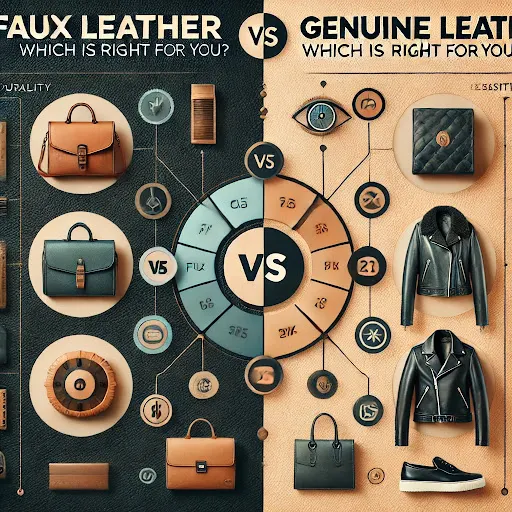Thursday, 10 October 2024
"Why Leather Still Reigns Supreme Over PU, Faux, and Cactus Leather Alternatives"
Monday, 29 January 2024
Navigating Global Leather Regulations: Understanding Prohibited Leathers and Conservation Measures
The prohibition or restriction of certain types of leathers across the world is often influenced by environmental, ethical, or conservation concerns. Here are a few examples:
Exotic and Endangered Species: The use of leathers from exotic and endangered species, such as certain types of snakes, crocodiles, and turtles, is often restricted or prohibited to prevent the illegal wildlife trade and protect endangered species from exploitation.
CITES-Listed Species: The Convention on International Trade in Endangered Species of Wild Fauna and Flora (CITES) is an international agreement that regulates the trade of certain animal and plant species. Many exotic leathers fall under CITES regulations, and their trade is strictly controlled to ensure their conservation.
Ivory and Elephant Leather: Due to the alarming decline in elephant populations, the international trade in ivory and elephant leather is banned to combat poaching and protect these iconic animals from extinction.
Protected Marine Species: Leather from certain marine species, such as sea turtles, is prohibited in many countries to safeguard these animals from exploitation and support conservation efforts.
Domestic Animal Abuse Concerns: In some regions, there are regulations against the use of leather obtained from animals that have been subject to cruelty, abuse, or unethical treatment. This may include regulations aimed at preventing the use of leather from animals raised for their skins in inhumane conditions.
Environmental Regulations: Some types of leather production involve harmful environmental practices, such as the use of toxic chemicals in tanning. Regulations and restrictions aim to address these environmental concerns and promote more sustainable practices in the leather industry.
Ethical and Religious Considerations: In some cultures and religions, there are prohibitions or restrictions on the use of leather from specific animals due to ethical or religious beliefs.
It's important to note that regulations and prohibitions can vary from country to country, and international agreements play a crucial role in addressing issues related to the trade and use of certain types of leathers. Additionally, ongoing efforts are being made by governments, organizations, and consumers to promote sustainable and ethical practices within the leather industry.
Elevate Your Style: Decoding the Faux Leather vs. Genuine Real Leather Debate – Unveiling the Best Choice for You!
The choice between faux leather and genuine real leather depends on various factors, including personal preferences, ethical considerations, and intended use. Here's a comparison between the two:
Faux Leather:
Material: Faux leather is typically made from synthetic materials such as polyurethane (PU) or polyvinyl chloride (PVC), and sometimes blended with fabric.
Cost: Faux leather is generally more affordable than genuine leather, making it an attractive option for budget-conscious consumers.
Sustainability: Faux leather can be considered more environmentally friendly, especially if it is made from eco-conscious materials. However, the production of synthetic materials also has its environmental impact.
Versatility: Faux leather allows for a wide range of designs, colors, and patterns, providing designers with greater flexibility in creating innovative and trendy products.
Ethical Considerations: Faux leather is a cruelty-free option, suitable for those who are concerned about animal welfare.
Durability: While faux leather can be durable, it may not withstand wear and tear as well as genuine leather over an extended period. It may be more prone to cracking and peeling.
Genuine Real Leather:
Material: Genuine leather comes from animal hides, typically cowhide but also from other animals like goats and pigs.
Cost: Genuine leather is generally more expensive due to the cost of sourcing and processing natural hides.
Sustainability: Leather production can have environmental impacts, particularly in the traditional tanning process. However, there are efforts to improve sustainability in the leather industry, such as using vegetable tanning methods.
Natural Characteristics: Genuine leather has unique natural variations in texture, color, and grain, adding character to each piece. It develops a rich patina over time.
Durability: Genuine leather is known for its durability and longevity. It tends to age well, becoming softer and more supple with time.
Breathability: Natural leather is breathable, allowing air circulation, which can be more comfortable in certain applications like clothing and upholstery.
Ultimately, the choice between faux leather and genuine real leather depends on individual preferences, budget, ethical considerations, and the intended use of the product. Both materials have their advantages and disadvantages, and the decision often comes down to personal values and the specific requirements of the consumer.




